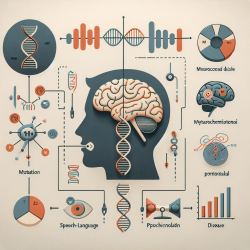Introduction
In the realm of special education, understanding the dynamics of networked populations can significantly enhance the delivery of online therapy services. The research article "Modeling of networked populations when data is sampled or missing" by Ian E. Fellows and Mark S. Handcock provides insights into handling partially observed network data, a common scenario in educational settings. This blog aims to guide practitioners in applying these findings to improve their skills and encourage further research.
Understanding Networked Populations
Networked populations consist of individuals connected through relational ties, often varying in multivariate attributes. In educational contexts, these networks could represent students, teachers, and therapists interacting within a school district. The primary focus is often on understanding both individual attributes and the social structure of these ties.
The research highlights the use of Exponential-family Random Network Models (ERNMs) to model the joint distribution of social ties and individual attributes, even when the population is only partially observed. This is particularly relevant for online therapy services, where data may be incomplete due to various factors such as non-response or limited resources.
Applications in Online Therapy Services
For companies like TinyEYE, which provide online therapy services to schools, understanding these network dynamics is crucial. Here are some ways practitioners can apply the research findings:
- Improved Data Handling: Use ERNMs to manage and interpret incomplete data, ensuring that online therapy services are tailored to the unique needs of each student.
- Enhanced Service Delivery: By modeling networked populations, therapists can identify key relational ties and leverage these connections to enhance therapy outcomes.
- Strategic Resource Allocation: Understanding network structures allows for more strategic deployment of resources, addressing therapist staffing shortages more effectively.
Encouraging Further Research
While the current research provides a robust framework for dealing with missing data in networked populations, there is always room for further exploration. Practitioners are encouraged to delve deeper into the following areas:
- Advanced Network Sampling Designs: Explore different sampling designs to improve data collection and analysis in educational settings.
- Integration with Digital Tools: Investigate how digital tools and platforms can be integrated with network models to streamline data collection and enhance therapy delivery.
- Cross-disciplinary Applications: Consider how these models can be applied across different disciplines within education to foster a more holistic approach to student support.
Conclusion
The insights from the research on networked populations and missing data provide valuable tools for enhancing online therapy services. By implementing these models, practitioners can improve service delivery, optimize resource allocation, and ultimately, better support students' educational and therapeutic needs.
To read the original research paper, please follow this link: Modeling of networked populations when data is sampled or missing.










